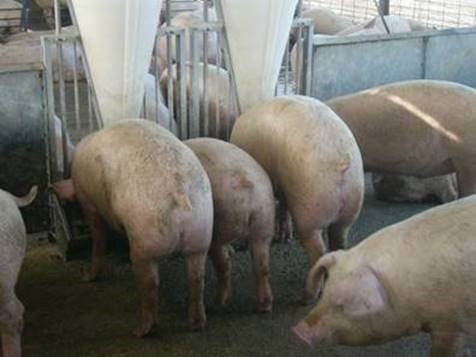



Bioinformatic tools are helping us understand vaccine immune coverage against evolving PCV2 strains
When PCV2 first emerged 20 years ago the economic impact was devastating.Part of Series:
< Previous Article in Series

The European Union lost an estimated €562 to €900 million per year due to this virus1. The launch of PCV2 vaccines in the mid-2000s in Europe have helped dramatically minimize the economic impact of this virus and PCV2 vaccination has now become routine on most pig farms.
Despite current vaccines doing a great job at limiting clinical disease, there are still reports of PCV2 vaccination failures resulting in clinical or subclinical disease on farms2,3. When discussing the efficacy of a vaccine, it is important to remember that there is a difference between vaccine efficacy and vaccine effectiveness. Vaccine efficacy is defined as the performance of a vaccine under controlled-challenged conditions, whereas vaccine effectiveness is the performance of a vaccine under real-life conditions at farm level4. There are different factors which could influence the effectiveness of PCV2 vaccines such as maternal immunity interference, age at vaccination, vaccination compliance, sow herd stability, and virus genetic variability due to high mutation and recombination rates of PCV2 driven by vaccine pressure5,6. Managing these factors by implementing best practices for vaccination, should increase the probability of mid to long-term success of controlling clinical and subclinical disease on farms.
Globally PCV2 diversity has been driven by genetic changes. This has arisen in new PCV2 genotypes, PCV2a through to PCV2h. The most common PCV2 genotype used to be PCV2a, but this has now been replaced by PCV2d7. All vaccines in the past used to be based on PCV2a genotypes. To add to this complexity, within each genotype we can also find many recombinant and mutant viruses.
At farm level, it is easier to recognise PCV2 systemic disease (PCV2-SD), but more frequently we deal with subclinical infection (PCV2-SI), which lack overt clinical signs, but rather see an impact on production factors, such as decreased average daily gain (ADG), impacting growth performance8. Effective PCV2 vaccines should stimulate both antibody and cell mediated immunity (CMI) in order to keep both PCV2-SD and PCV2-SI under control. CMI is particularly important for viral clearance in PCV2 infected animals. The PCV2 virus has an outer structural protein called cap. This structural protein contains Epitopes, and it is these Epitopes that immune cells (T cells) recognise which results in a cascade of immunological events which leads to the death of PCV2-infected cells.
Bioinformatics is a field of science in which several disciplines such as biology, computing and information technology converge to organise and store large amount of biological information. In the arena of bioinformatics, a new immunoinformatic tool for pigs has been developed. This new tool is helping design epitope-driven vaccines and predicting vaccine efficacy for diseases like Swine influenza A and more recently for PCV2. As part of these tools, a novel technology called Epitope Content Comparison (EpiCC) developed by the company EpiVax9 has been used to understand what a vaccine may offer in terms of immune coverage to field strains analyzing T cell epitopes, with this tool, we can predict immune coverage and plot the results of different vaccines against PCV2a, 2b and 2d field strains.
A study was conducted in Europe analyzing 109 PCV2 sequences from 10 countries with the objective of comparing T cell epitope coverage from a monovalent - PCV2a vaccine (based on PCV2a genotype) and a bivalent cPCV1-2a/cPCV1-2b chimeric PCV2 vaccine (CircoMax® Myco, containing PCV2a and PCV2b genotypes), against circulating PCV2 field strains in Europe. Using the EpiCC tool, T cell epitope content of the two vaccines were assessed and compared to the T cell epitope content of field strain PCV2 viruses. The vaccines were then assigned a score based on the number of T cell epitopes the vaccine has in common with the field virus. These EpiCC-scores are then used to quantify how closely the T cell epitope content of a given vaccine matches that of the field strain virus, thus offering a better antigenic coverage against the field strain. The analysed samples were collected between 2014 and 2020. The following distribution in field PCV2 genotypes was recorded; 53% PCV2d, 37% PCV2b and 10% PCV2a, showing PCV2d being the most prevalent PCV2 genotype in Europe.
Based on EpiCC scores, CircoMax® Myco showed a greater epitope coverage compared to the monovalent PCV2-a vaccine, with a median coverage of 81% compared to 60% respectively. On average this represented an improvement in epitope coverage of 36% for CircoMax® Myco compared to the monovalent PCV2-a vaccine. The results from this study suggest that a vaccine containing two PCV2 genotypes may confer a broader cross-reactive cell-mediated immune response compared to vaccines that contain only one PCV2 genotype10.
Even though current PCV2 vaccines have demonstrated disease control, PCV2 virus is still evolving and immunoinformatic tools like EpiCC offer a way to assess the impact of genetic divergence on T cell epitope coverage for current PCV2 vaccines.
These bioinformatic tools provide us the ability to evaluate new vaccines as part of our toolbox in the challenge against PCV2, with the potential of helping to improve the control of PCV2 on farms.
References:
- Tucker, A.W., 2006. Porcine multi-systemic wasting syndrome (PMWS):a review. Pig J.
- Dvorak CM, et al. 2016 National reduction in porcine circovirus type 2 prevalence following introduction of vaccination. Vet Microbiol 189:86–90
- Eddicks, M. et al. Detection of a new cluster of porcine circovirus type 2b strains in domestic pigs
- in Germany. Vet. Microbiol. 2015, 176, 337–343.
- McNeil S. Overview of vaccine efficacy and vaccine effectiveness. Canadian Center for Vaccinology. Dalhousie University IWK Health Centre Capital Health.
- https://www.who.int/influenza_vaccines_plan/resources/Session4_VEfficacy_VEffectiveness.PDF
- Segales, J. 2015. Best practice and future challenge for vaccination against PCV2. Exper. Rev. Vaccines 12(3), 473-487.
- Trible R.B. et al., 2012. Genetic variation of PCV2 and its relevance to vaccination, pathogenesis and diagnosis. Virus Research 164. 68-77.
- Franzo G et al., 2016. PCV2 evolution before and after the vaccination introduction: A large scale epidemiological study. Scientific reports 6:39458.
- Oliver-Ferrando S., et al., 2016. Evaluation of natural PCV2 subclinical infection and seroconversion dynamic in piglets vaccinated at different ages. Vet Res. 47:121.
- EpiVax, Inc. Providence RI, USA.
- Angulo J., Foss D., 2021. Use of a novel immunoinformatic tool (EPICC) to determine T Cell epitope coverage from different PCV2 vaccines against field European strains. ESPHM. Immunology and Vaccinology IMM-OP-02.









